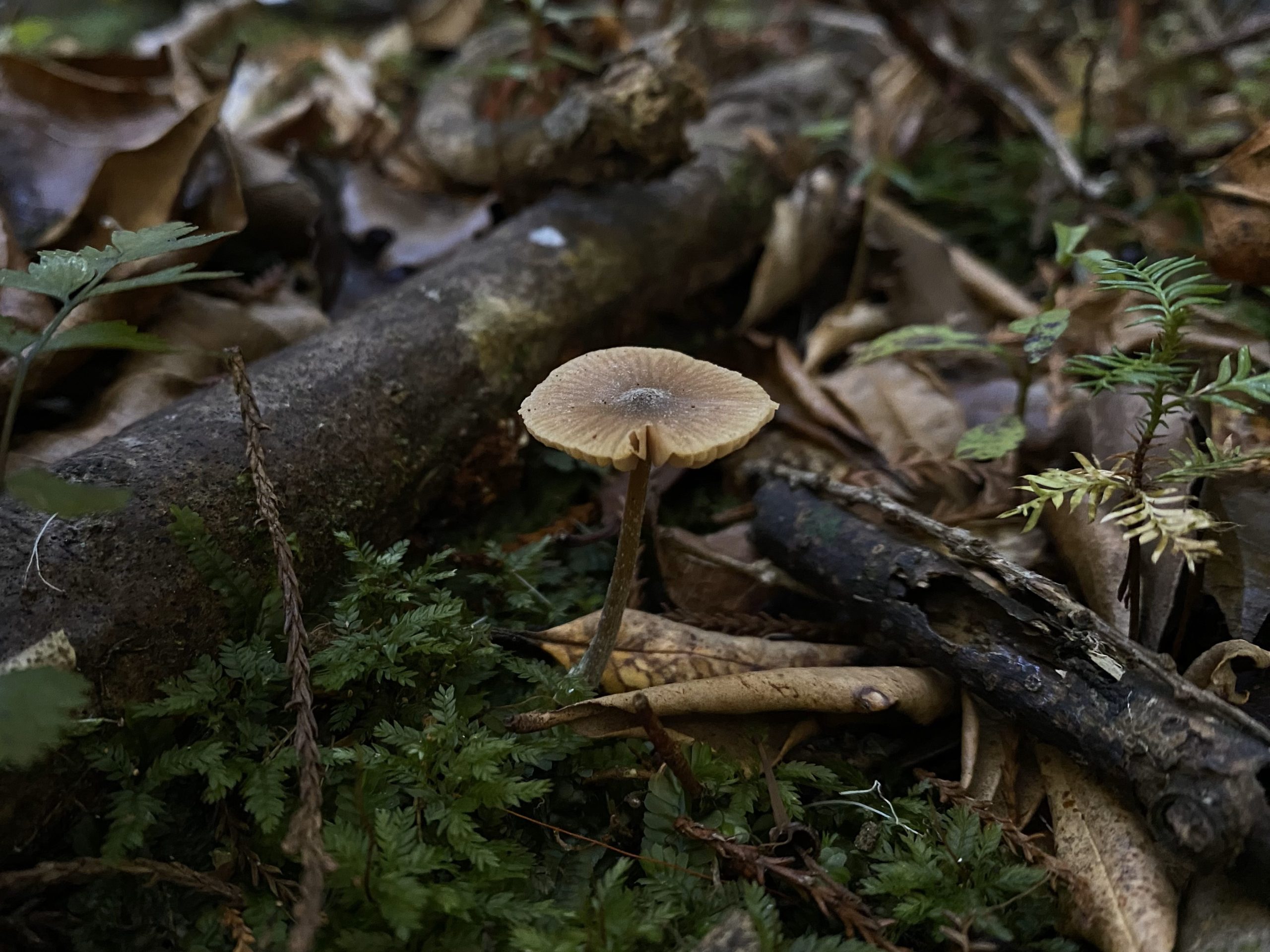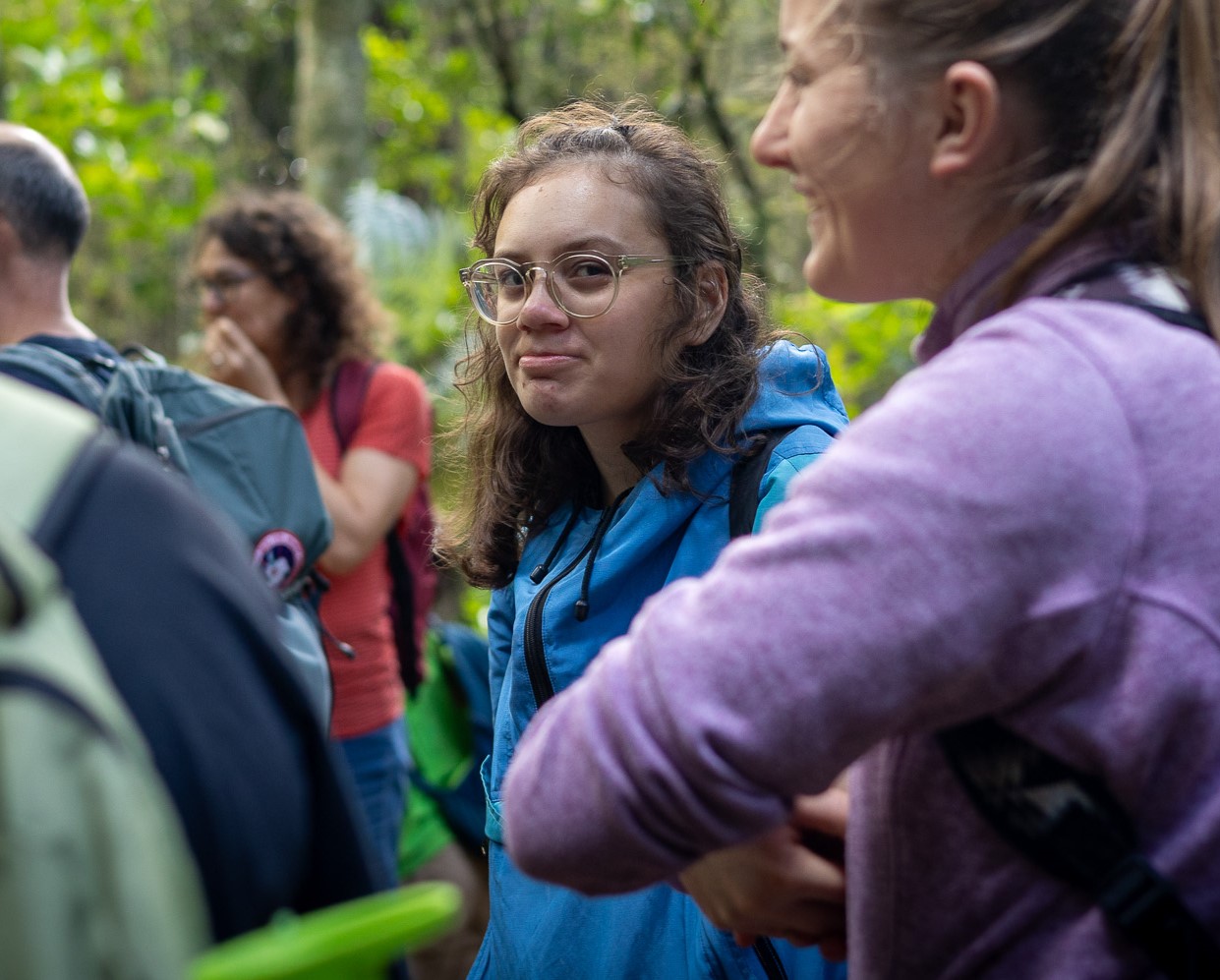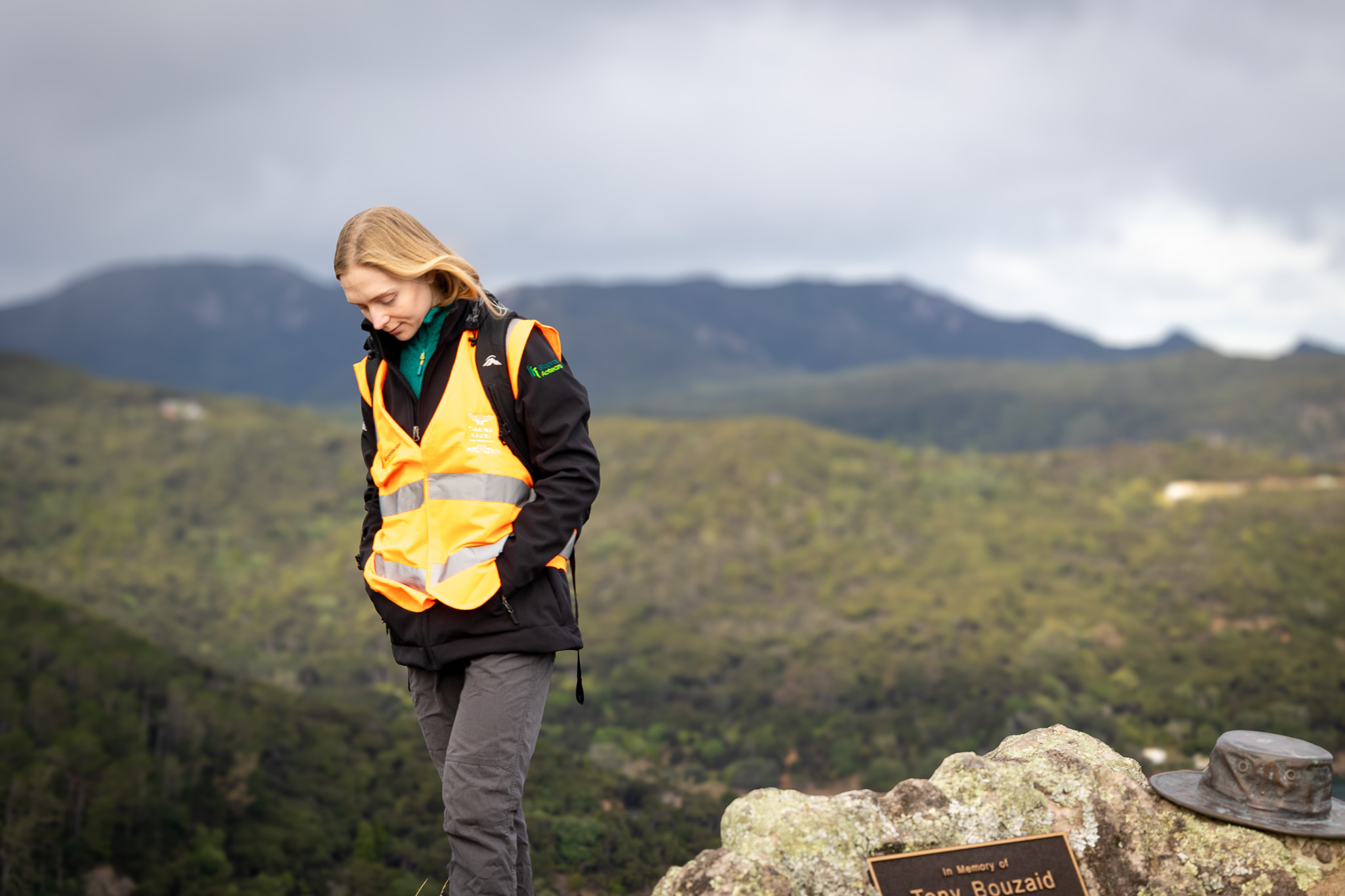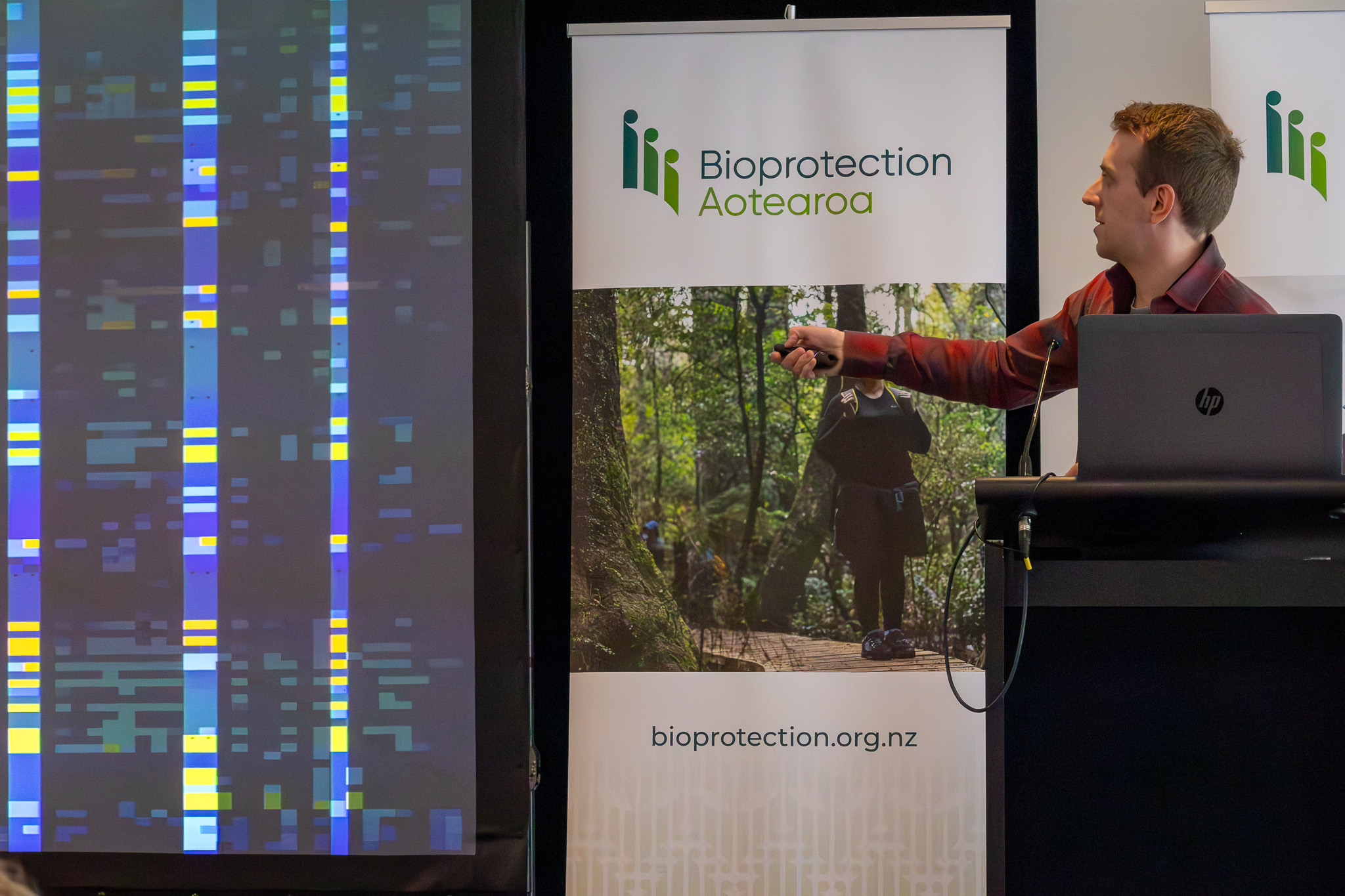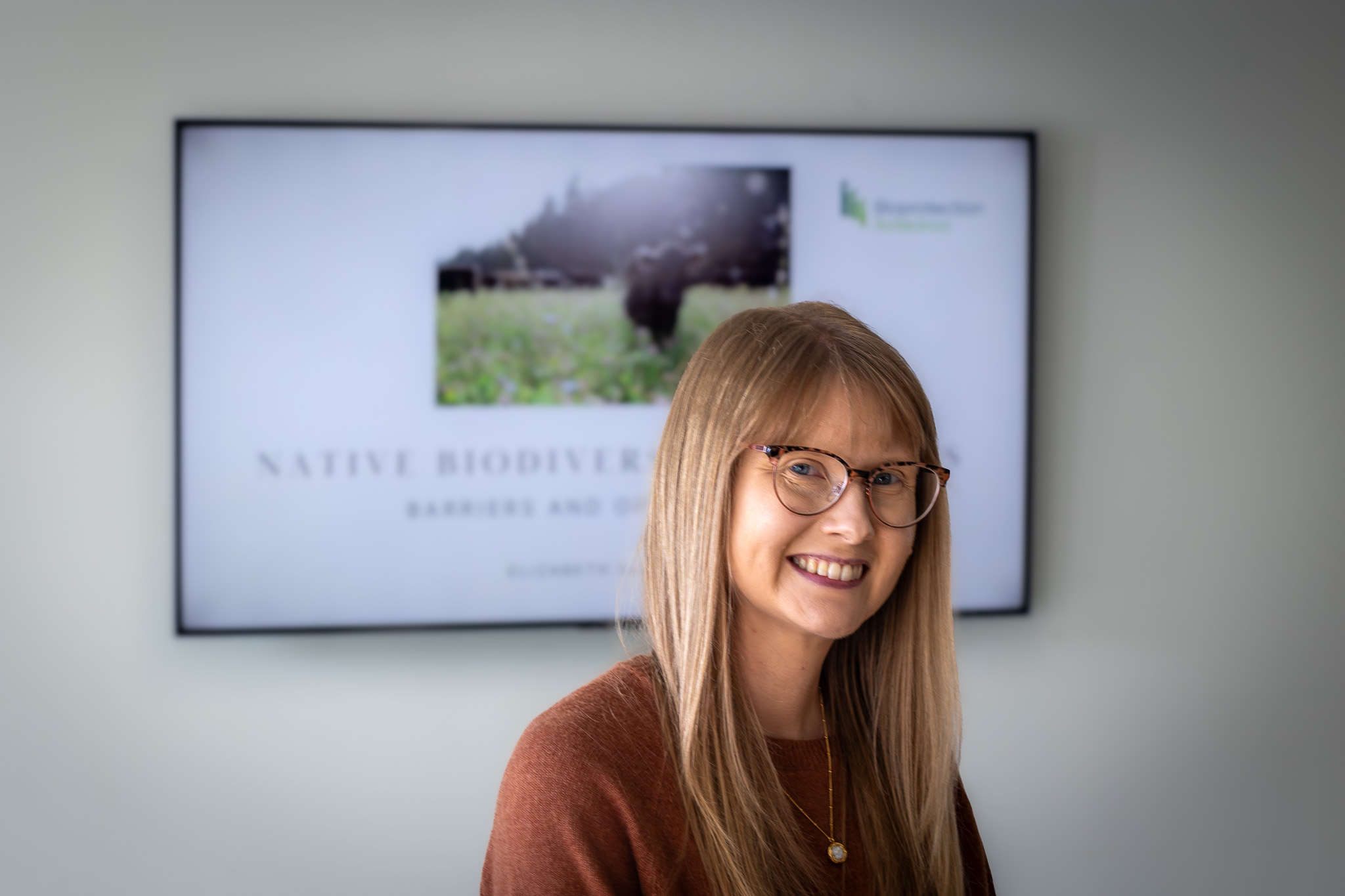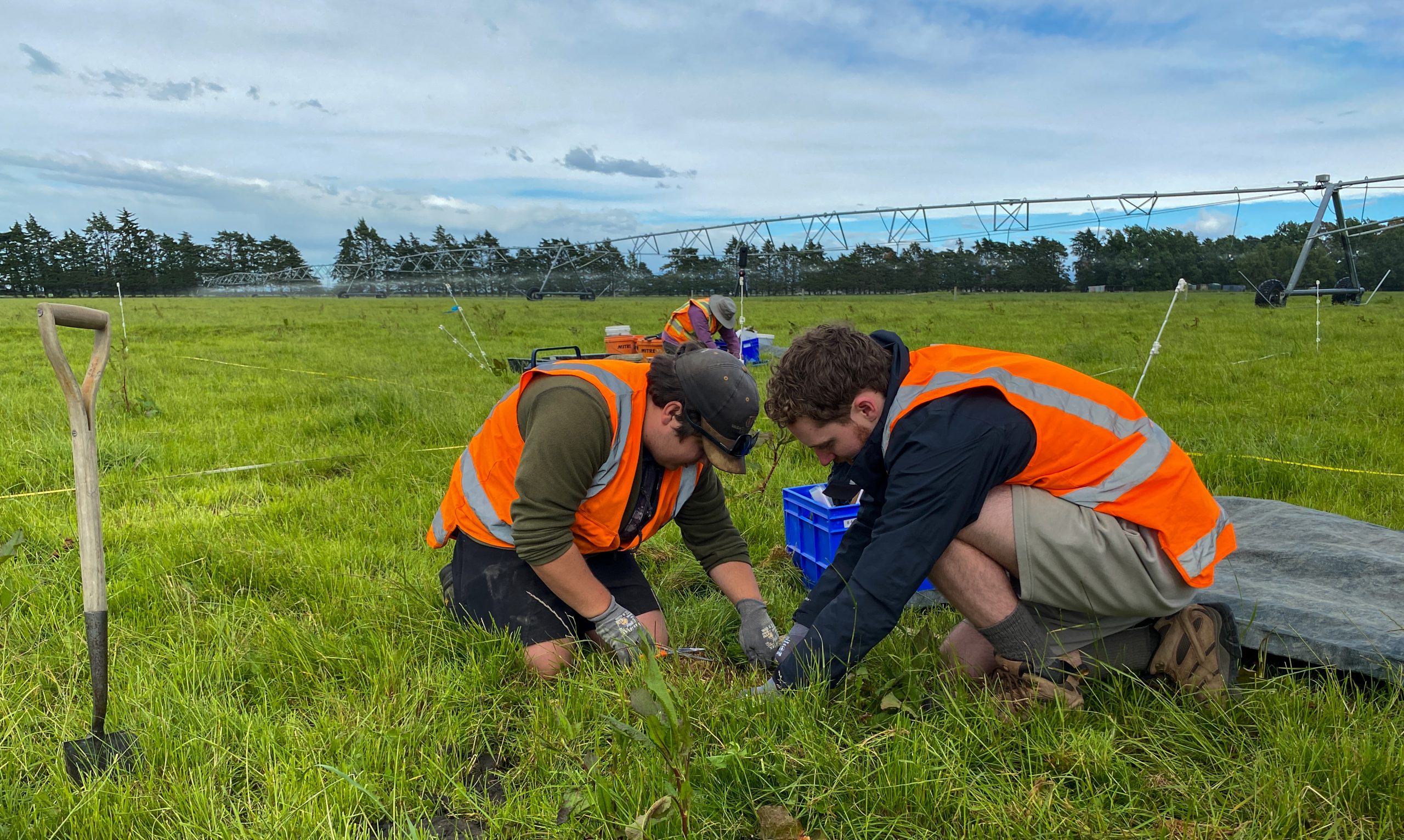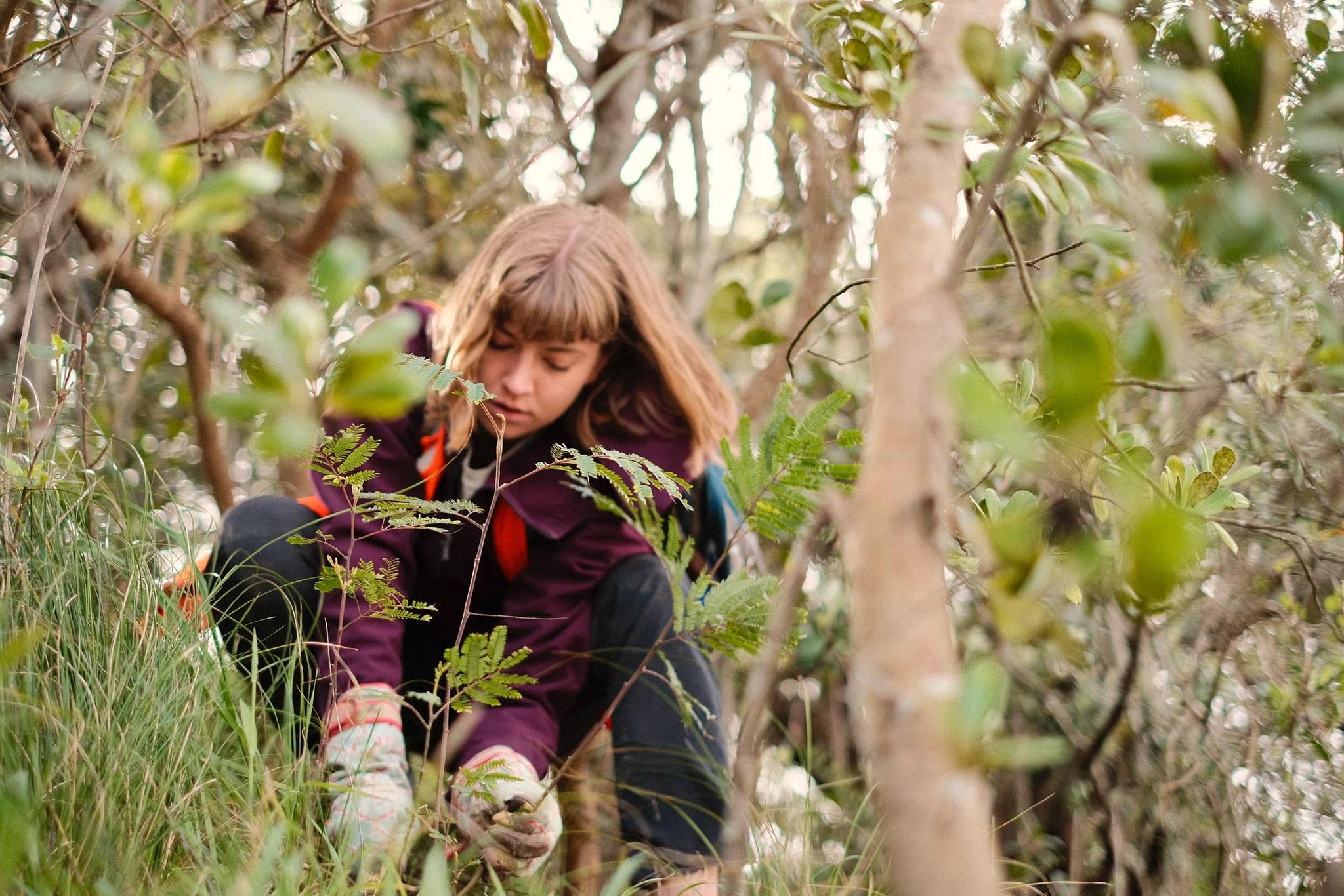
Diana Borse pulling out brush wattle
What happens when you mix woolly nightshade (Solanum mauritianum), brush wattle (Paraserianthes lopthantha), and tree privet (Ligustrum lucidum) with native plants from Aotearoa New Zealand?
You might think it’s a weedy good time, but Diana Borse, a PhD student from the University of Auckland, is delving into the intricate world of weed ecology to find out. She’s investigating how these weeds interact with native plants in our natural ecosystems.
Despite the stigma often associated with weeds, Diana sees an opportunity to explore their ecological roles and interactions. “Understanding the background of weed invasion in Aotearoa New Zealand, I saw an opportunity to delve deeper into their ecological roles and interactions,” says Diana.
In the field of weed ecology research, there has been limited studies investigating the coexistence of multiple weed species. Diana adds “most studies focus on single weeds, but in reality, land managers deal with multiple species.”
Methodical Approach: From Field to Shade House
To investigate the patterns of co-occurrence among these weeds, Diana is using both real-world fieldwork and controlled shade house experiments, aiming to identify signs of facilitation or competition among plant species.
“I conduct circular plots around specific weed species to assess their impact on surrounding vegetation,” Diana explains. “These 4m2 circular plots, are centred around mature weed species such as woolly nightshade, tree privet, or brush wattle.”
For comparison, Diana pairs each weed plot with a mature native species, to understand the impact of the site versus the specific plant species. “I measure attributes such as canopy cover and litter depth, to account for environmental factors influencing plant growth.”
From 180 plots measured, preliminary data analysis has already revealed emerging patterns, particularly regarding the influence of brush wattle on the presence of other weeds.
“Brush wattle shows a higher proportion of weed seedling beneath its canopy than native or woolly nightshade centred plots.” This emerging pattern has Diana hypothesising that there might be some facilitation going on.
“Brush wattle is a nitrogen fixer, so it could be adding nitrogen to the system, facilitating grown and establishment for the riskier weeds.”
Diana adds that more data is required to validate whether this pattern is actually causation rather than correlation. “Combining this emerging pattern with our shade house experiments, could show something really interesting”.

Diana’s shade house experiment includes 1000 plant specimens.
Shade House Experiments
Diana’s shade house experiments have been designed to explore the intricate dynamics between weeds and native species with a focus on determining whether their interactions yield additive or non additive effects.
Under carefully controlled conditions, Diana has planted the different combinations of weed species alongside native plants, aiming to understand the nuanced dynamics of their coexistence in these experiments.
The native plant Diana is using is Mānuka, sourced from Pourewa nursery of Ngāti Whātua Ōrākei. Her methodological approach involves monthly measurements of plant growth, assessment of soil conditions, and monitoring each species.
Diana’s research also extends beneath the surface, looking at the root systems, analysing samples to decipher mycorrhizal colonisation, and soil interactions.
The shade house experiments are conducted in two phases, beginning with the growth of Mānuka seedlings in the presence of various weed combinations. Simultaneously, Diana is growing another batch of Mānuka plants in pots with different weed combinations, to prepare for her next phase of experiments.
“After the first shade house experiment ends, I’ll then remove one of the weeds and then keep them growing to see how that affects the remaining Mānuka and then also the remaining weeds.”
Managing a total of 1000 plant specimens, Diana faces challenges including pests, transplant issues, and the survival of brush wattle.
“Brush wattle has been a nightmare. I’ve collected probably 1,500 brush wattle at this point to have 200 surviving.” Seeking advice, Diana has actively managed this issue by adjusting her potting mix, selecting different collection sites of weeds, and proactively replacing weeds which have died.
Data Analysis and Potential Impacts
As part of her broader research efforts, Diana is analysing Auckland Council data on weed occurrences in residential areas bordering reserves. This analysis provides insights into the spread of these weeds and the effectiveness of current management practices.
“So, by combining fieldwork with the analysis of the dataset from the Auckland Council, we aim to develop more effective strategies for managing invasive plant species like brush wattle.”
With her PhD expected to end by September 2025, Diana’s research is well on its way to making significant contributions to both scientific knowledge and environmental management practices.
By clarifying the mechanisms driving invasive species dynamics and proposing evidence-based management solutions, her work promises to enhance ecosystem resilience and promote biodiversity conservation in Aotearoa New Zealand.
More Information
To learn more about Diana’s research, visit The interactions of co-occurring weeds and their impacts on native plants




